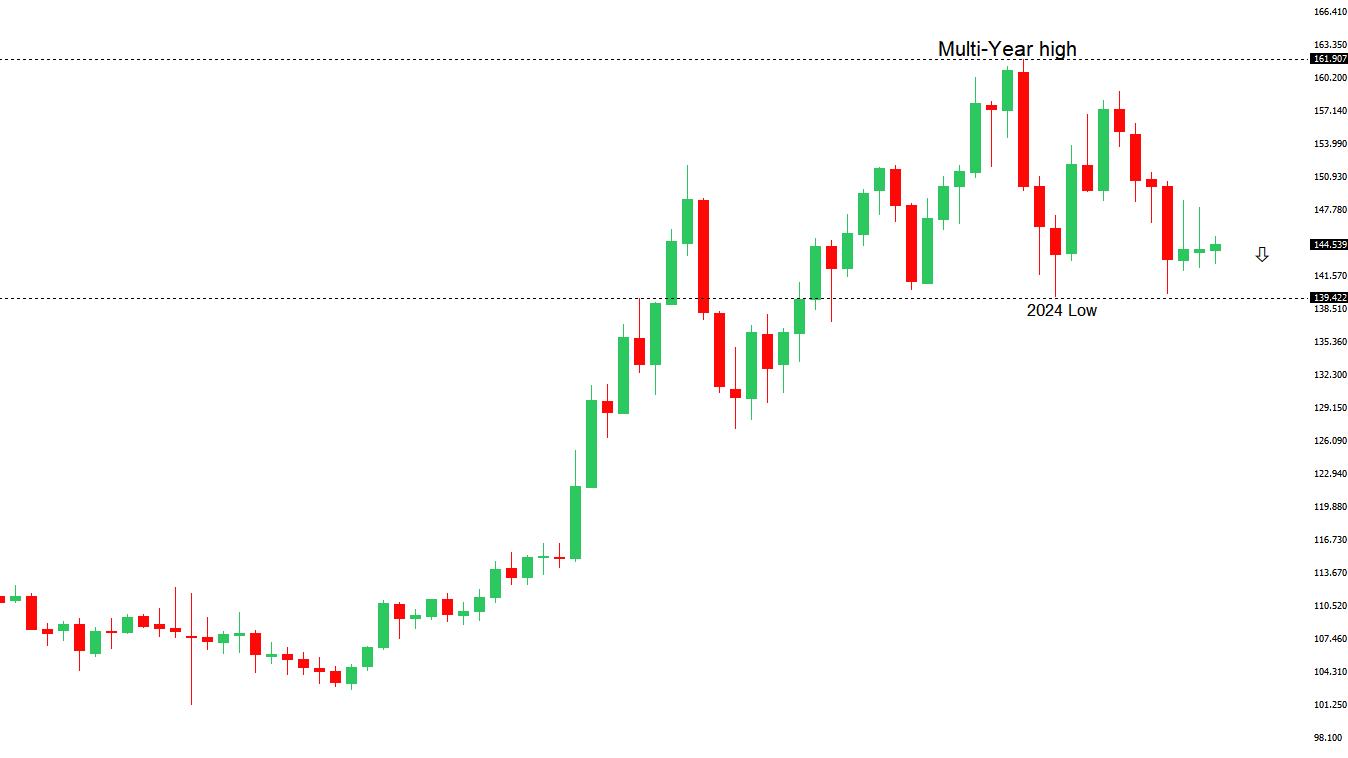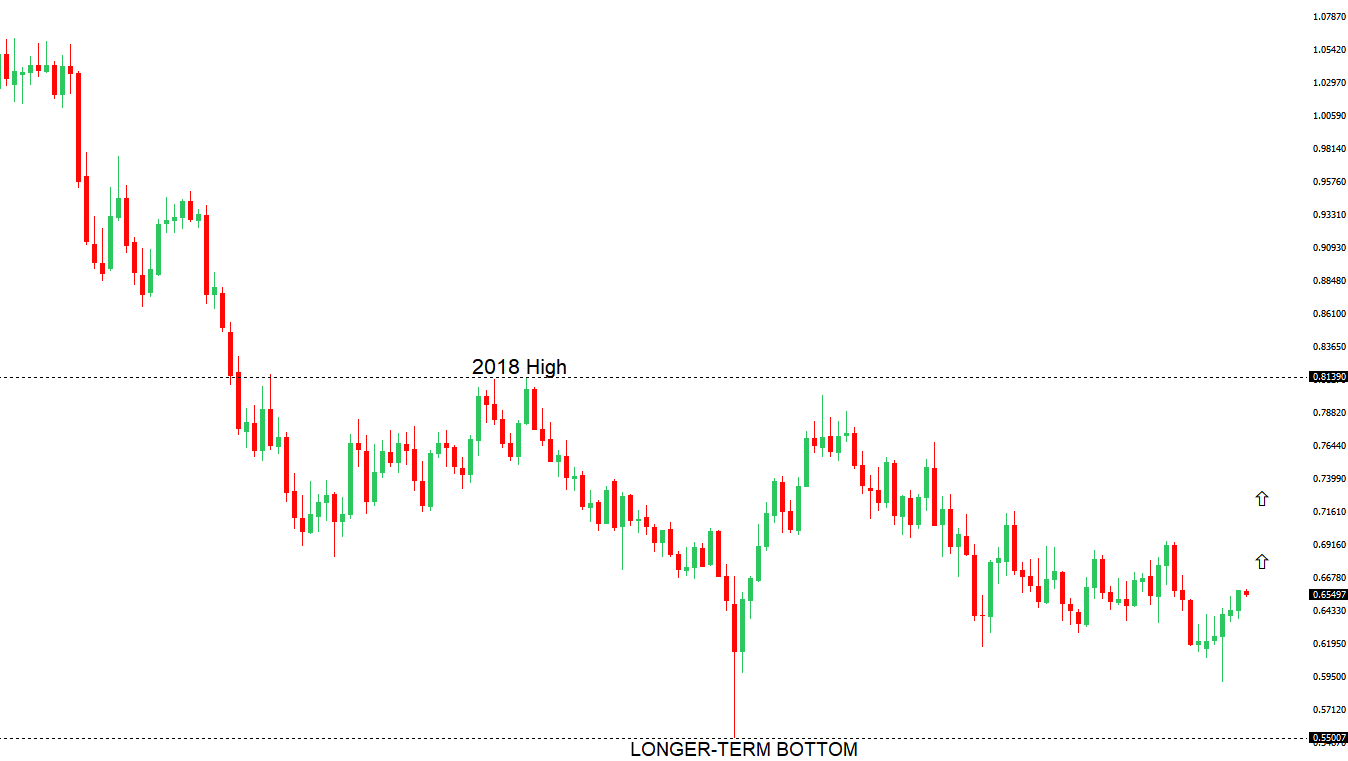 | ||
| 8th July 2025 | view in browser | ||
| Dollar dips as Fed expectations cool | ||
| The U.S. dollar weakened after the New York Fed’s 1-year inflation expectations cooled off. Meanwhile, President Trump’s criticism of Federal Reserve Chair Powell and his demand for Powell’s resignation added pressure, though there is a sense the Buck won’t be wanting to drop too much more ahead of next week’s CPI release. | ||
| Performance chart 30day v. USD (%) | ||
 | ||
| Technical & fundamental highlights | ||
| EURUSD: technical overview | ||
| The Euro has broken out from a multi-month consolidation off a critical longer-term low. This latest push through the 2023 high lends further support to the case for a meaningful bottom, setting the stage for a bullish structural shift and the next major upside extension targeting the 2021 high at 1.2350. Setbacks should be exceptionally well supported below 1.1500. | ||
 | ||
| R2 1.1900 - Figure - Medium R1 1.1830 - 1 July/2025 high - Medium S1 1.1682 - 8 July low - Medium S2 1.1654 - 26 June low - Medium | ||
| EURUSD: fundamental overview | ||
| One major European bank strategist suggests the U.S. administration favors a weaker dollar to address trade deficits, citing Treasury official Bessent’s comments that the dollar’s recent drop is due to a stronger euro, driven by Europe’s fiscal policies. The strategist predicts the euro could hit $1.20 this year, potentially reaching $1.25, supported by monetary policy differences as the ECB is near a neutral rate with only one more cut expected, while the Fed faces pressure from Trump for dovish policies despite no rate cuts in July. The euro, up 2.72% last month, is the second-best performing G10 currency, boosted by optimism over a potential U.S.-EU trade deal. However, German exports fell 1.4% in May, worse than expected, due to U.S. tariffs, risking further economic strain if no trade agreement is reached. | ||
| USDJPY: technical overview | ||
| There are signs of a meaningful top in place after the market put in a multi-year high in 2024. At this point, the door is now open for a deeper setback below the 2024 low at 139.58 over the coming weeks, exposing a retest of the 2023 low. Rallies should be well capped below 150.00. | ||
 | ||
| R2 148.03 - 23 June high - Strong R1 147.00 - Figure - Medium S1 144.18 - 4 July low - Medium S2 142.68 - 1 July low - Strong | ||
| USDJPY: fundamental overview | ||
| Japan, led by Prime Minister Shigeru Ishiba, is negotiating with the U.S. to reach a trade deal by August 1, with U.S. auto tariffs a major hurdle, as Japan’s trade negotiator Ryosei Akazawa emphasized the auto industry’s critical role. Facing July 20 elections, a corruption scandal, and low approval ratings, Ishiba’s government may adopt expansionary fiscal policies, driving up 30-year JGB yields above 3% and prompting a cautious Bank of Japan to maintain gradual tightening with no 2025 rate hikes expected. Widening U.S.-Japan yield differentials and negative real interest rates in Japan make USDJPY shorts costly, with the pair potentially in position to move a little higher before gravitating back towards medium-term support, especially if election outcomes weaken the LDP, increasing fiscal spending pressure and delaying BOJ policy normalization. Recent data shows Japan’s June M2 and M3 money stock growth at 0.9% and 0.4% year-over-year, respectively, up from 0.6% and 0.2%. | ||
| AUDUSD: technical overview | ||
| There are signs of the potential formation of a longer-term base with the market trading down into a meaningful longer-term support zone. Only a monthly close below 0.5500 would give reason for rethink. A monthly close back above 0.7000 will take the big picture pressure off the downside and strengthen case for a bottom. | ||
 | ||
| R2 0.6600 - Medium - Strong R1 0.6591 - 1 July/2025 high - Medium S1 0.6484 - 25 June low - Medium S1 0.6373 - 23 June low - Strong | ||
| AUDUSD: fundamental overview | ||
| The Australian dollar held above its 50-day moving average as markets view the August 1 U.S. trade deadline as a potential extension, favoring deals over high tariffs that previously disrupted markets. The Reserve Bank of Australia kept the Official Cash Rate at 3.85%, citing robust employment, low unemployment, and the need for more data to ensure inflation sustainably hits 2.5%, with upcoming CPI data being key. Despite global and domestic uncertainties, including trade policy risks, the RBA noted that prior rate cuts are still impacting the economy, and while the board was split, it leaned toward future easing, with markets now expecting two rate cuts in 2025 instead of three. | ||
| Suggested reading | ||
| Don’t Sleep on China, S. McBride, RiskHedge (July 7, 2025) What A Falling Dollar Means For Inflation, T. Slok, Apollo Academy (July 6, 2025) | ||


